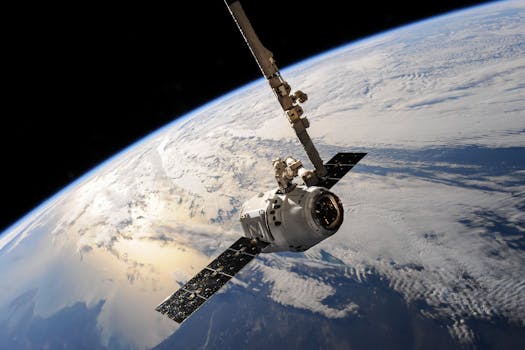MEO Satellites: Revolutionizing Global Communication with Medium Earth Orbit Technology – MEO Satellites

MEO Satellites: Revolutionizing Global Communication with Medium Earth Orbit Technology – MEO Satellites
MEO satellites, or Medium Earth Orbit satellites, are a type of satellite that operates in an intermediate orbit between Low Earth Orbit (LEO) and Geostationary Orbit (GEO). This unique position allows MEO satellites to offer a range of benefits, including faster and more reliable connections, making them an essential component of modern satellite communication systems. In this article, we will delve into the world of MEO satellites, exploring their history, technology, applications, and future prospects.
History and Development of MEO Satellites
The concept of MEO satellites dates back to the 1960s, when the first commercial communications satellites were launched. However, it wasn’t until the 1990s that MEO satellites began to gain popularity, with the launch of the first Globalstar constellation. Since then, several other constellations have been deployed, including O3b (Other 3 Billion) and Iridium NEXT. These constellations have paved the way for the widespread adoption of MEO satellites in various industries, including telecommunications, navigation, and Earth observation.
Technology and Characteristics of MEO Satellites
MEO satellites operate at an altitude of approximately 2,000 to 36,000 kilometers, which is higher than LEO satellites but lower than GEO satellites. This intermediate orbit allows MEO satellites to provide a unique combination of benefits, including global coverage, high bandwidth, and low latency. MEO satellites typically have a larger footprint than LEO satellites, making them ideal for applications that require broad coverage, such as telecommunications and navigation. Additionally, MEO satellites have a longer lifespan than LEO satellites, with an average operational lifetime of 10 to 15 years.
MEO satellites use a range of technologies to provide communication services, including transponders, antennas, and propulsion systems. They also employ advanced technologies such as beamforming and beam-hopping to optimize their performance and increase their capacity. Furthermore, MEO satellites often use intersatellite links to enable communication between satellites, allowing for seamless handovers and improved network reliability.
Applications and Uses of MEO Satellites
MEO satellites have a wide range of applications across various industries, including telecommunications, navigation, Earth observation, and scientific research. In telecommunications, MEO satellites provide broadband internet services, voice and data communications, and backhaul services for mobile networks. They are particularly useful in areas where terrestrial infrastructure is limited or non-existent, such as remote or underserved communities.
In navigation, MEO satellites are used to provide positioning, navigation, and timing (PNT) services, which are essential for various industries, including aviation, maritime, and land transportation. The use of MEO satellites in navigation has improved the accuracy and reliability of PNT services, enabling more efficient and safe operations.
Earth observation is another significant application of MEO satellites, which are used to collect data on the environment, climate, and natural resources. MEO satellites can provide high-resolution images and data on weather patterns, ocean currents, and land use, helping scientists and policymakers make informed decisions about our planet’s resources and ecosystems.
Future Prospects and Challenges of MEO Satellites
The future of MEO satellites looks promising, with several new constellations and technologies on the horizon. One of the most significant developments is the launch of new satellite constellations, such as OneWeb and Amazon’s Kuiper Systems, which will provide global internet coverage and other communication services. Additionally, advancements in technologies such as 5G, quantum computing, and artificial intelligence will further enhance the capabilities of MEO satellites, enabling new applications and use cases.
However, MEO satellites also face several challenges, including regulatory hurdles, spectrum management, and space debris. The increasing number of satellites in orbit has raised concerns about congestion and interference, highlighting the need for more effective spectrum management and regulation. Furthermore, the risk of space debris has become a significant concern, with the potential to damage or destroy operational satellites and disrupt communication services.



